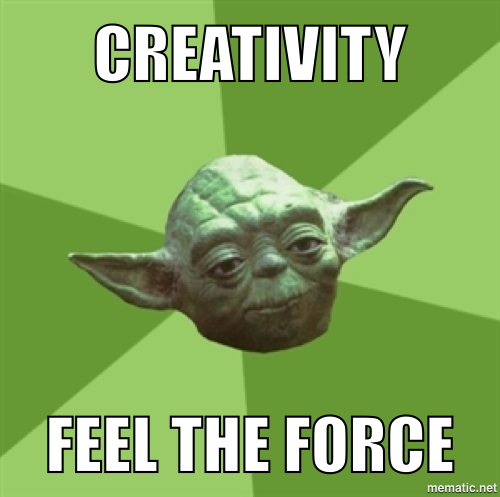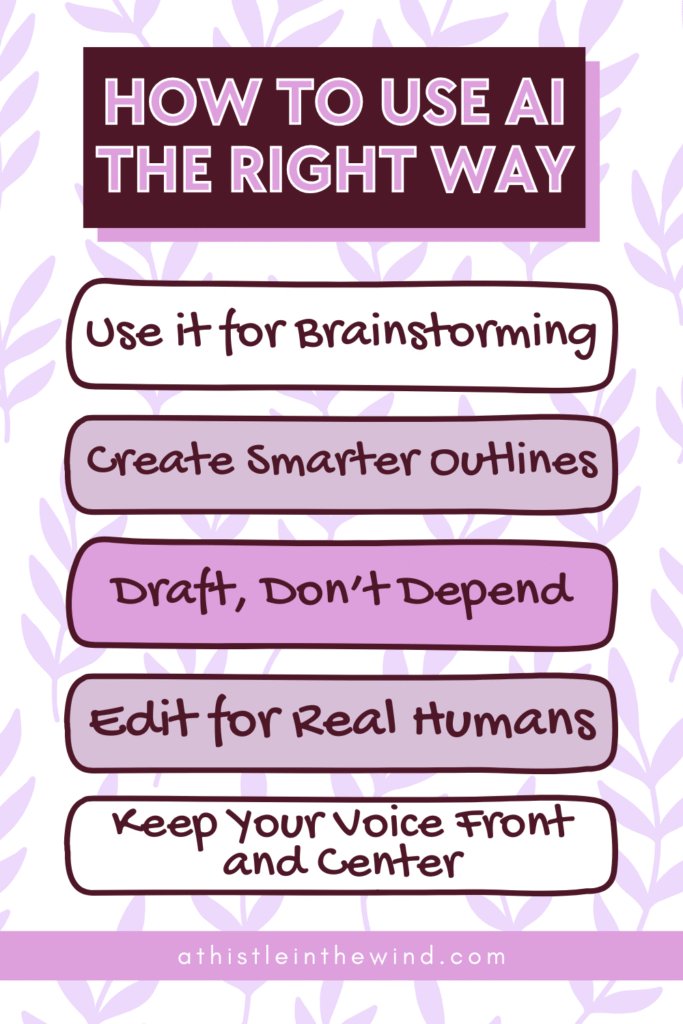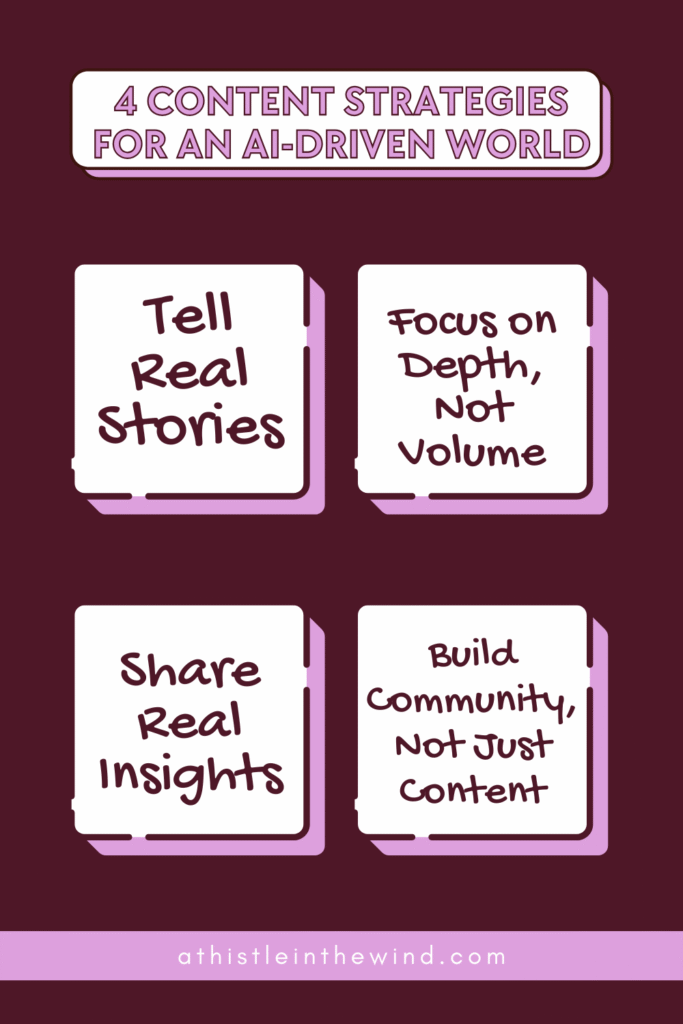How to Create Content in Our Brave New AI-Powered World

I’ll admit, it’s been a while since I’ve written any blogs related to AI — and there’s a whole bunch of reasons behind it. The most obvious? I’m super, super busy. The less obvious? I’ve quietly spent the last year actually learning how to use AI at work. And not just for writing industry insights either.
We’re a super lean team at work, and my boss is very into automation and systems. And if you’ve read my previous blogs on AI, you’ll know that I have thoughts — especially about certain companies (and certain CEOs) believing that AI will magically replace all workers and make ‘em millions.
Yeah, I’m not a fan of that.
But over the past year, I’ve sort of become the stand-in PR person at my job. Like, I’m not the actual PR person. We don’t have that. I’m still in product, but I did get my start in marketing — and when you see easy wins being ignored, it’s hard to sit back.
Like, it hurt me to see that we weren’t doing anything about it. So, with the help of a few AI tools, I may or may not have launched a podcast for our company and finally created a blog section for the website. Now, I carve out an hour or so on Mondays and Fridays to push new content — twice a week. (Shocker, right?)
So, yeah. I may not fully agree with the ethics behind AI-use in the modern world. But I can see why it’s a necessity. And that’s what this blog is about: how we create good content in this AI-powered world — without losing the human touch.
What AI Can (and Can’t) Do for Content Creation
Let’s get one thing out of the way: AI can do a lot. There’s no denying it. It can generate ideas, write rough drafts, summarize research, and even tweak grammar faster than you can say “deadline panic.” And if you’re in a pinch — like, last-minute client meeting pinch — AI tools can absolutely save you.
But here’s what AI can’t do (and probably never will): it can’t think like you. It can’t bring your lived experiences, your weird sense of humor, your niche references, or that oddly specific anecdote that makes your blog post feel real.
AI is great at starting the process — not so much at finishing it. It’s a tool for:
- Brainstorming when you’re stuck
- Speeding up basic outlines
- Cleaning up awkward first draft
It’s not a replacement for:
- Original ideas
- Brand voice
- Actual storytelling
You’re still the one who needs to bring the spark — the connection that makes readers stay past the first paragraph. So, if you’re hoping AI will take content creation entirely off your plate? Hate to break it to you — you’re still very much needed. And honestly, that’s a good thing.

Why Human-Centric Content Matters More Than Ever
Here’s the thing which a lot of tech bros seem to forget: AI is fast, but it’s also predictable. It pulls from what already exists — remixing, rewording, rephrasing. Which is fine… until every blog post starts sounding like it was written by the same slightly over-enthusiastic intern who just discovered SEO.
In a world where AI can churn out a thousand blog posts in the time it takes you to drink your coffee, what actually stands out? Your Human-ness. People still want:
- Stories they can relate to
- Opinions that don’t sound sanitized
- Content that feels like it was written for them — not at them
Audiences have pretty good radar for content that’s hollow, even if it’s technically well-written. They’re not just looking for answers — they’re looking for connection.
Brands and creators that get this — the ones doubling down on voice, personal experiences, and honest perspectives — are the ones winning right now. Not the ones churning out 50 AI-written articles a week with no soul.
So yeah, AI is a powerful tool. But your voice? That’s the real competitive advantage.
How to Use AI the Right Way
Now that we’ve established AI isn’t replacing you anytime soon, let’s talk about how to actually make it work for you — without turning your content into a copy-paste snoozefest. Here’s how to use AI tools the right way:
1. Brainstorming
Staring at a blank page sucks. AI is great for breaking that initial block. Throw a few prompts at it, and let it spit back ideas — even if half of them are terrible. Spoiler: half of them will be terrible.
2. Outlining
AI can help you sketch a rough outline fast. Sections, subheadings, structure — done in minutes. Just don’t let it dictate the flow. Move stuff around. Add your voice.
3. Drafting
AI drafts are first drafts. That’s it. They’re the skeleton — you’re the muscle. Add your perspective, your stories, your examples. Otherwise, it’s just word soup.
4. Editing
AI can clean grammar, fix awkward phrasing, and tighten sentences. But — you still need to edit for humanness (trust me: I’m well aware of how weird this sounds. I’m just trying to keep it as simple as possible. My word of choice is humanity but it’s not the best choice of words either so we’re stuck with this one).
Readers can smell a bot-written piece even if it’s grammatically perfect.
5. Voice and Tone
AI doesn’t know your brand’s inside jokes. It doesn’t know your audience’s pet peeves. That’s your job. Before you hit publish, run a gut check: does it sound like you — or just another AI blog post no one will remember?
AI isn’t here to replace the creative process. It’s here to speed up the boring parts — so you can focus on what actually matters: saying something worth reading.

Why Not Everything Needs to Be AI-Generated
Look — just because you can use AI for everything doesn’t mean you should. There’s real value in writing a messy first draft yourself. In sitting with an idea a little too long. In editing a piece three times until it sounds exactly right.
Not everything needs to be automated. Sometimes, the best content comes from slowing down and doing it the hard way — because that’s where the originality shows up.
Yes, use AI to speed up when it makes sense.
But don’t feel like you’re falling behind if you choose to write, record, or design the old-fashioned way sometimes. Authenticity isn’t something you can shortcut — and in a world drowning in AI content, being genuinely human is what’s going to set you apart.
Content Strategies for an AI-Heavy Future
If AI is changing how content is made (and it is), then it only makes sense that the way we think about content needs to change too. Here’s what will actually matter moving forward:
1. Focus on Storytelling and Personal Experience
Anyone can generate tips and lists. What AI can’t generate is your personal story, your weird little failures, your oddly specific industry gripes. If you want people to remember you, give them something real to remember.
2. Prioritize Depth Over Volume
AI makes it easy to churn out a lot of meh content. Resist the urge. Instead of racing to publish 20 surface-level blogs a month, focus on a few pieces that actually dive deep and show your expertise.
Quality > quantity. Always.
3. Build Authority Through Real Insights
You’ve been in the trenches. You’ve made mistakes. You’ve figured things out the hard way. AI hasn’t. Sharing real insights — stuff that only comes from actual experience — is how you build trust (and readers who stick around).
4. Double Down on Community and Connection
AI can write a blog post. It can’t build a relationship. Spend time replying to comments, personalizing emails, and connecting with your readers. The future belongs to creators who don’t just create — they connect.
In a world where AI can replicate content, the real differentiator is you — your stories, your voice, and your ability to make people feel like they’re part of something bigger than just another blog post.

Where We Go From Here
AI isn’t going anywhere — and honestly, it’s not the enemy either. It’s just a tool. A fast, sometimes clumsy, occasionally brilliant tool. The real win isn’t in fighting it or blindly handing it the keys to your creative work. It’s in figuring out where AI can make your life easier — and where your human voice still needs to lead.
The future of content isn’t just AI-generated or human-made. It’s the smart blend of both. Use AI to speed up the boring parts. Save your creativity, your stories, and your spark for the parts that actually matter.
That’s how you’ll create content that still feels brave, personal, and, most importantly — yours.
